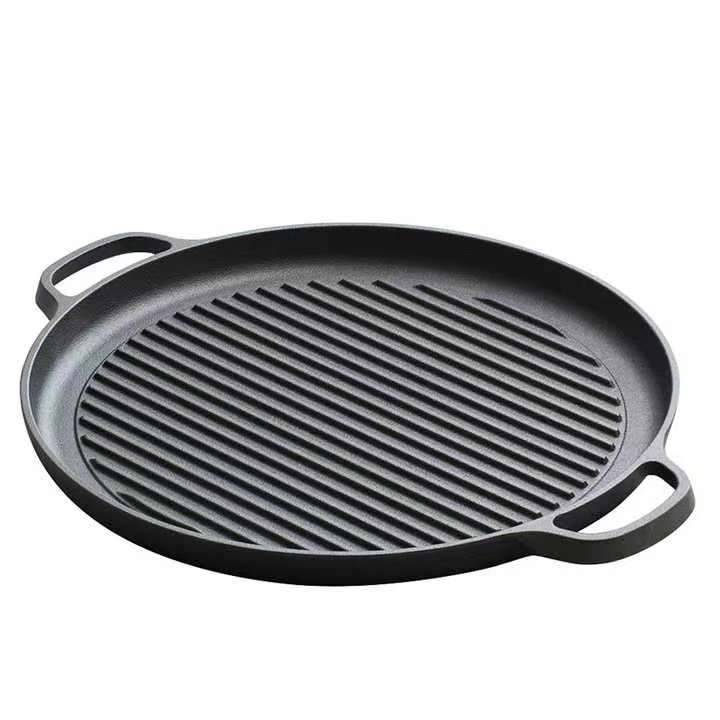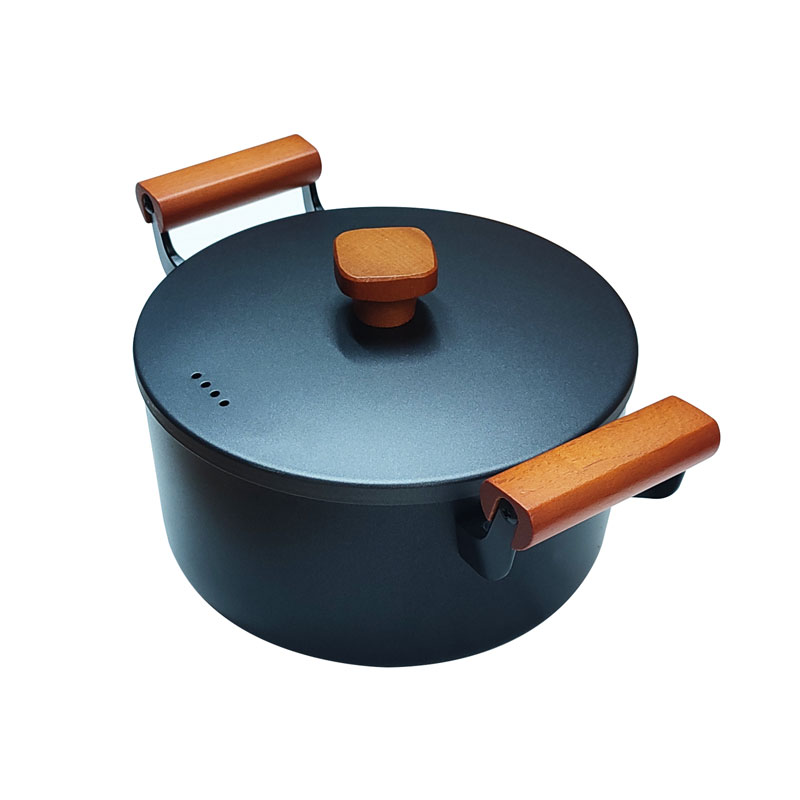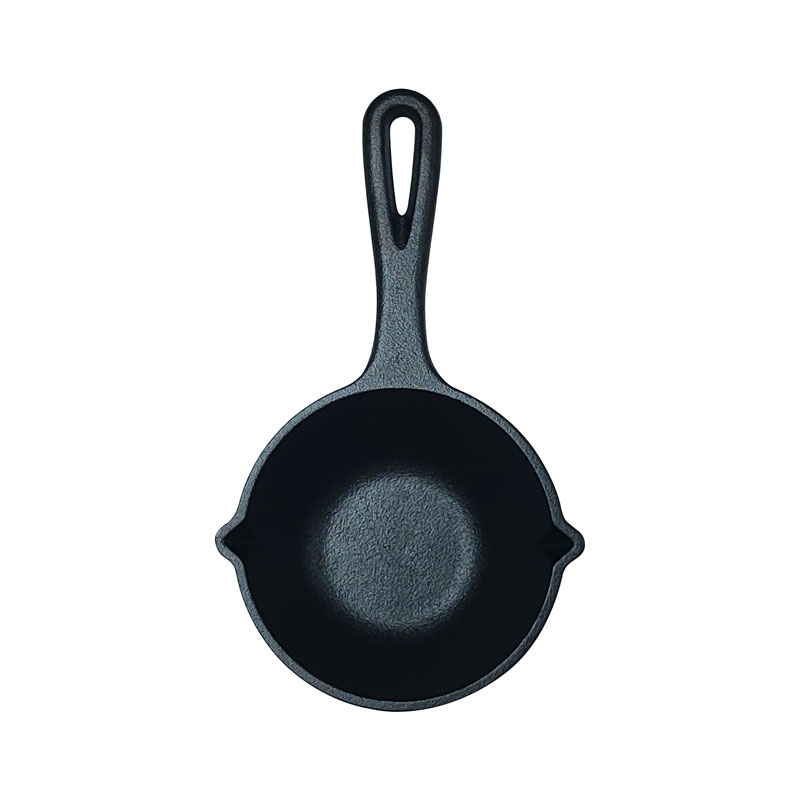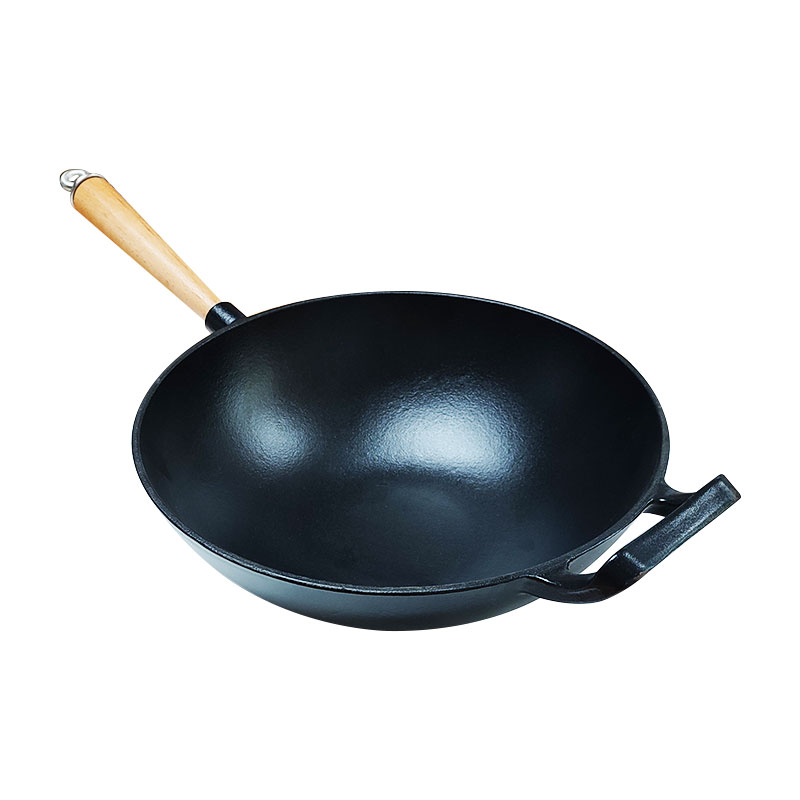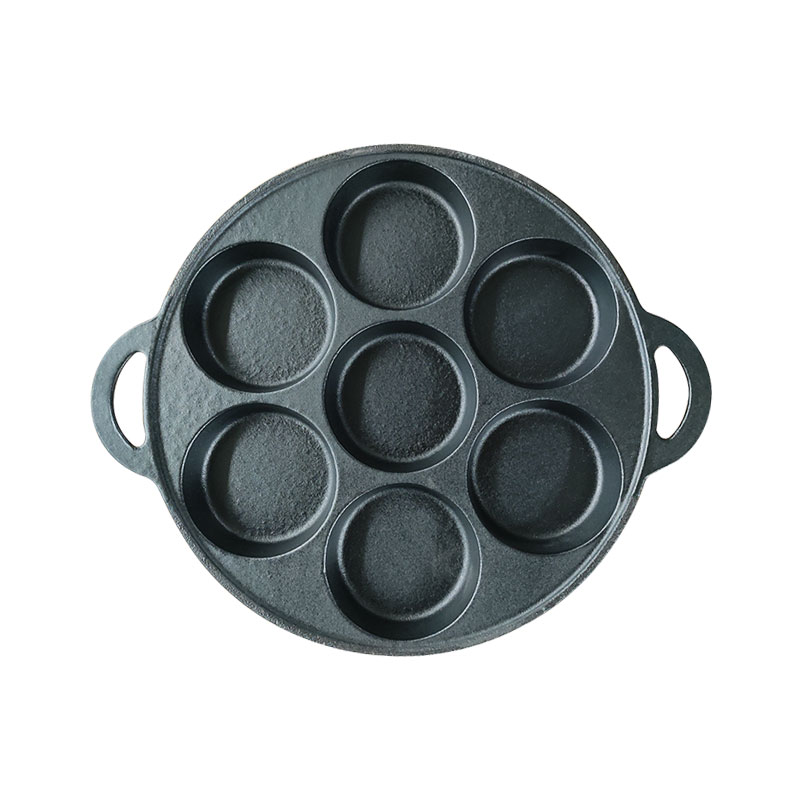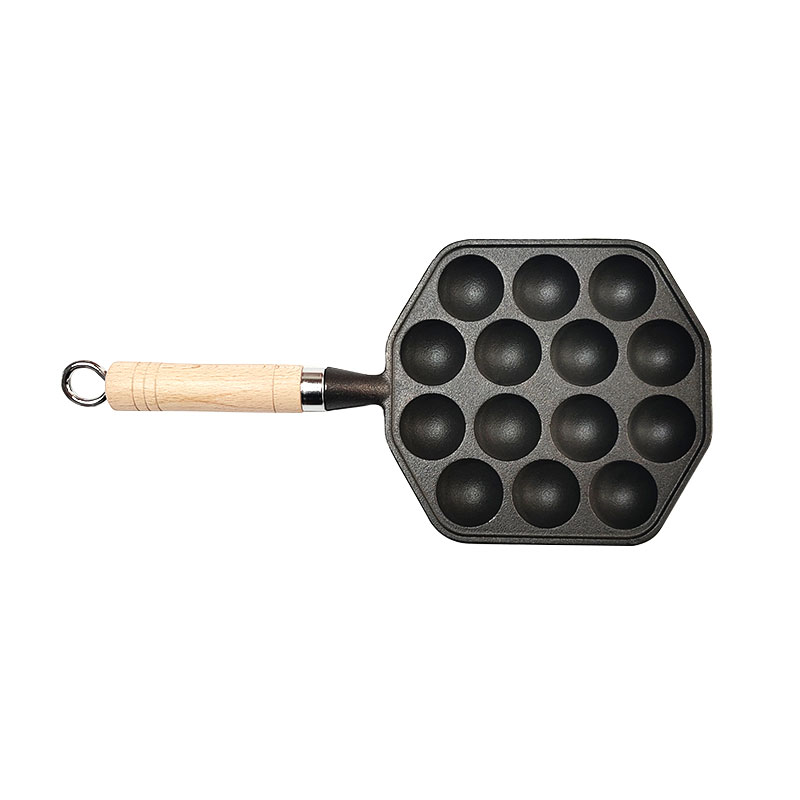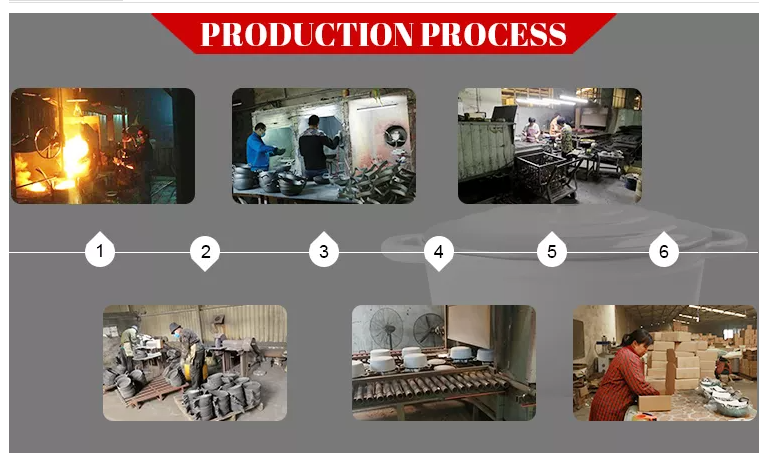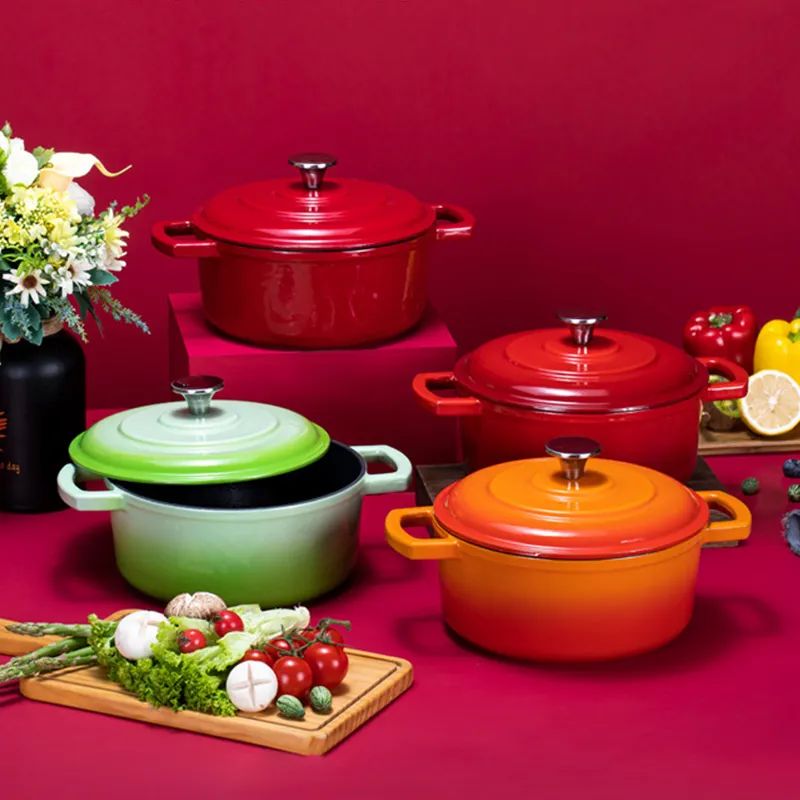Potê bişo
Dema ku hûn di tepsiyê de xwarinê çêdikin (an jî heke we nû kirîbe), tepsiyê bi ava germ, hinekî sabûnî û kefçekî paqij bikin. Ger bermahiyên we yên serhişk û şewitî hebin, pişta kefçekî bikar bînin da ku wan bixurînin. Ger ev yek nexebite, çend kevçîyên xwarinê rûnê kanola an nebatî têxin tepsiyê, çend kevçîyên xwarinê xwêya koşer lê zêde bikin û tepsiyê bi destmalên kaxezî bişon. Xwê têra xwe aşın e ku bermahiyên xwarinê yên serhişk rake, lê ne ewqas hişk e ku zirarê bide biharatan. Piştî ku her tiştî rakirin, tepsiyê bi ava germ bişon û bi nermî bişon.
Bi tevahî hişk bike
Av dijminê herî xirab ê hesinê qalibkirî ye, ji ber vê yekê piştî paqijkirinê pê ewle bin ku hûn tevahiya tenûrê (ne tenê hundir) bi tevahî hişk bikin. Ger li ser bimîne, av dikare bibe sedema zengarbûna tenûrê, ji ber vê yekê divê ew bi qumaşek an destmalek kaxezî were paqij kirin. Ji bo ku hûn bi rastî pê ewle bin ku ew hişk e, tenûrê li ser agirê bilind deynin da ku buharbûn çêbibe.
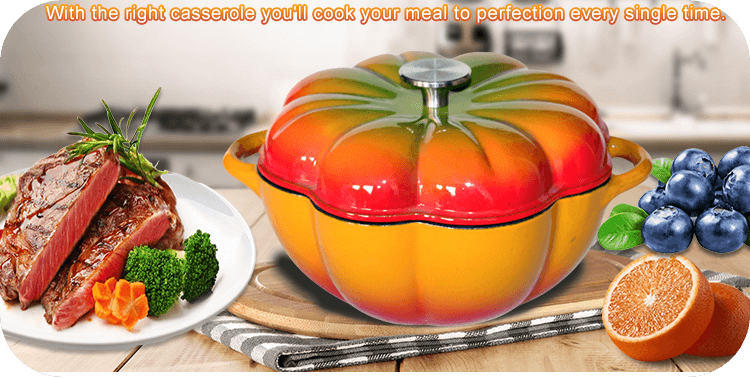
Bi rûn û germê tam bikin
Dema ku tava paqij û zuwa bû, bi piçek rûn paqij bikin, û piştrast bikin ku ew li seranserê hundirê tavê belav dibe. Rûnê zeytûnê bikar neynin, ku xala dûmanê wê kêm e û dema ku hûn di tenûrê de bi wê dipijin bi rastî xirab dibe. Di şûna wê de, bi qasî kevçîyek çayê rûnê nebatî an kanola, ku xala dûmanê wê bilindtir e, tevahî paqij bikin. Dema ku tava rûn bû, li ser agirê bilind bihêlin heta ku germ bibe û hinekî dûman bike. Hûn naxwazin vê gavê ji dest bidin, ji ber ku rûnê negermkirî dikare bibe zeliqok û tirş.
Cool and store the pan
Dema ku tencereya hesinî sar bû, hûn dikarin wê li ser tezgaha metbexê an sobeyê hilînin, an jî hûn dikarin wê di dolabekê de hilînin. Ger hûn hesinî bi tencereyên din û tavayan re li hev dikin, destmaleke kaxezî têxin nav tencereyê da ku rûyê wê were parastin û şilbûnê jê bibe.
How to prevent rust.
If the cast iron pot is used for a long time, there will be a lot of scorch marks and rust spots at the bottom of the pot. If you often cook, it is recommended to clean and maintain it once a month.
Scrub the whole pot, including the surface, bottom, edge and handle thoroughly with “steel wool + dish detergent” to clean all rust spots.
A lot of people will make a mistake, every time the maintenance of rust only deal with the “bottom cooking part”, but the cast iron pot is “one formed” pot, must be placed at the bottom of the pot, the handle whole to deal with, otherwise rust, will soon appear in those hidden places.
Rinse the pot with hot water, scrubbing it with a sponge or vegetable cloth.
After cleaning, be sure to bake the cast iron pot over a gas stove until completely dry.
Every time the cast iron pot is used, cleaned and maintained, remember to “keep it dry”, otherwise it will be damaged.
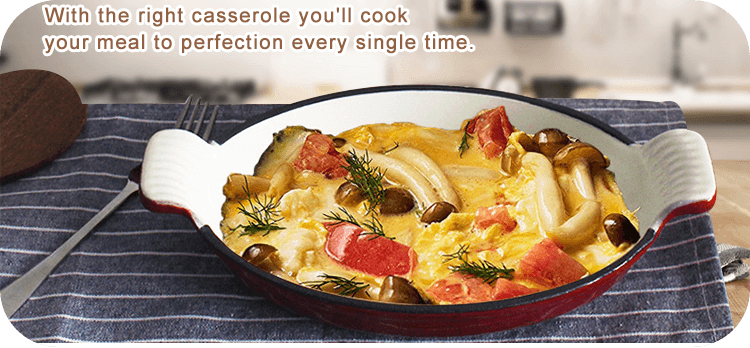
Rêbaza lênêrîna pota hesinî ya avêtinê
Make sure the pot is completely dry and drizzle the pot with oil.
Flax seed oil is the best maintenance oil, but the price is somewhat higher, and we can also use general olive oil and sunflower oil.
As with cleaning, use a kitchen paper towel to grease the entire pot completely. Remove another clean paper towel and wipe off excess grease.
The bottom of the cast iron pot is not coated, and there are many small holes. The oil will form a protective film on the bottom of the pot, which will fill all the substitutions, so that it is not easy to stick the pot and burn when we cook.
Turn the oven to its maximum heat (200-250C) and place the cast iron pot in the oven, pot side down, for 1 hour.
The temperature must be enough that the grease on the cast iron pot exceeds the smoke point and binds to the pot itself to form a protective layer. ; If the temperature is not high enough, it will just feel sticky and greasy, without the maintenance effect.
Cleaning and use.
Cleaning: scrub with soft sponge, rinse with water, and then dry with paper towel to avoid damage to the bottom surface coating, release harmful substances, so as not to affect human health.
If the bottom of the pot is too oily, soak up the grease with paper towels before washing with hot water.
Cast-iron POTS can be fitted to a wide variety of modern stoves, many of which will be fitted with tiles that can easily accumulate and store heat at the bottom.
The traditional metal non-stick pot is coated with a layer of PTFE, which is added to give the pot a non-stick effect, but is prone to release carcinogens when damaged. Later, a coating made of ceramic was developed, which is relatively safer. When using a non-stick pot, be careful to avoid cleaning with a hard steel brush or cooking with an iron spatula to avoid scratching and coating.
Do not dry burn non-stick pot, this will easily damage the coating; If the bottom coating is found to be scratched or cracked, it should be replaced with a new, to have the correct idea of “non-stick pot is a kind of consumable”, do not save money but harm to health,
How to rust iron pot: Soak vinegar
Plug the plunger at the bottom of the sink, prepare equal parts of vinegar and water, mix and pour into the sink, completely submerge the pot in the vinegar water.
A few hours later, check whether the rust on the iron pot melting, if not clean, then extend the soaking time.
If the cast iron pot is soaked in vinegar water for too long, it will corrode the pot instead!! .
After a bath, it’s time to give the pot a good scrub. Use the rough side of the vegetable cloth or a steel brush and rinse with warm water to remove residual rust. Dry the cast iron pot with kitchen paper towels and place in a gas stove. On the low fire drying, you can carry out the subsequent maintenance action.











